- July 26, 2024
-
-
Loading

Loading
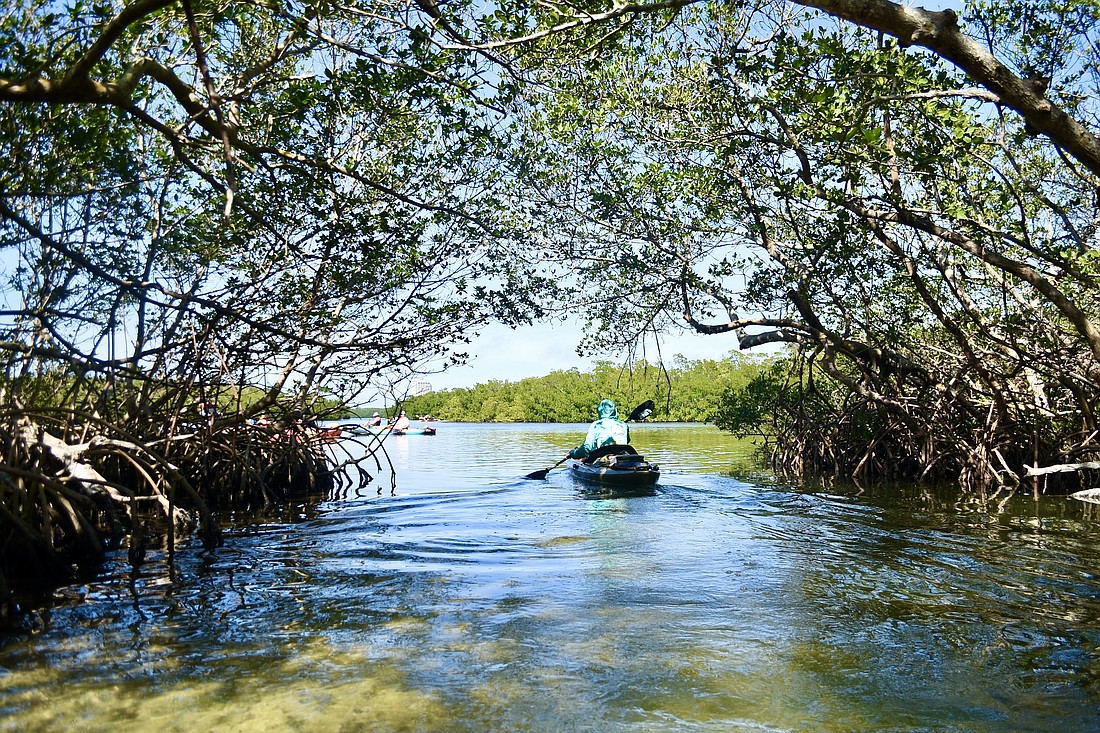
It’s Thursday afternoon, and I’m kayaking through tunnels carved out of mangrove branches off south Lido Key. The canopy of leaves fights off the blazing sun outside, and the rays can only reach my skin in specks. The air feels about 10 degrees cooler, and the office feels about 1,000 miles away.
My assignment is to take a kayak tour from Ted Sperling Park, where Sarasota County oversees the operation of seven kayak concessionaires that offer rentals and tours, through the mangrove tunnels just offshore. The company I’ve selected to lead my tour is Kayaking SRQ.
Even in a group of 15, the excursion is slow-paced and peaceful. The tunnels are narrow, so the kayaks glide along single file. Minnows swim alongside, and every so often, a fiddler crab breaks the silence by shuffling up a branch.
If you get lucky, you’ll see starfish. I only saw two on this tour, but in 2016, my family rented kayaks to ring in the new year. There were so many starfish we couldn’t count them. They were blanketing the mangrove roots like presents under a Christmas tree.
My mother was 66 years old at the time, and my son was only 3. Perhaps a baby who can’t sit up on his own yet shouldn’t be brought along, but outside of that, the tunnels are fit for any age. In a worst-case scenario and the kayak tips, the surrounding water is only about two feet deep.
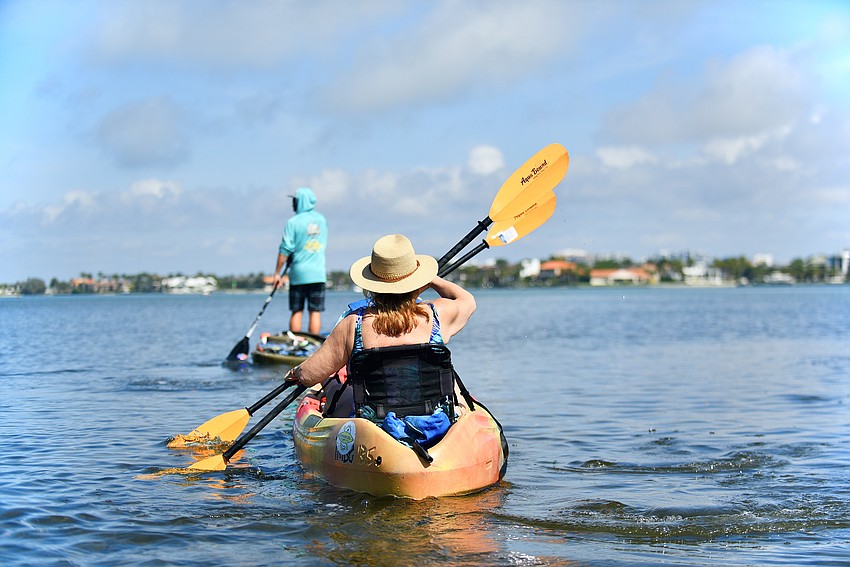
“If anything weird happens, you guys need to put your feet down,” our tour guide Steffan Simmons says. “Otherwise, I will embarrass you. I’ll do an open water rescue in two feet of water, and it gets pretty dramatic.”
Simmons also lets us know that there’s no cool way to get into a kayak, so we’re instructed to “plop and pivot.” It may not be graceful, but again, anyone can do it. I plop my butt in the seat, swing my legs over the side, and with a little push from Simmons, I’m off.
Our group gathers in an open area after kayaking through the first tunnel, which is routine for each passage. The water is still shallow outside the mangroves, but there’s no shield from the sun, so make sure to pack sunscreen.
But where’s our tour guide? Simmons is suddenly nowhere to be seen.
Just as another kayaker wonders aloud if we’ve been abandoned, Simmons emerges from the tunnel with a paddle in one hand and a snake wrapped around the other.
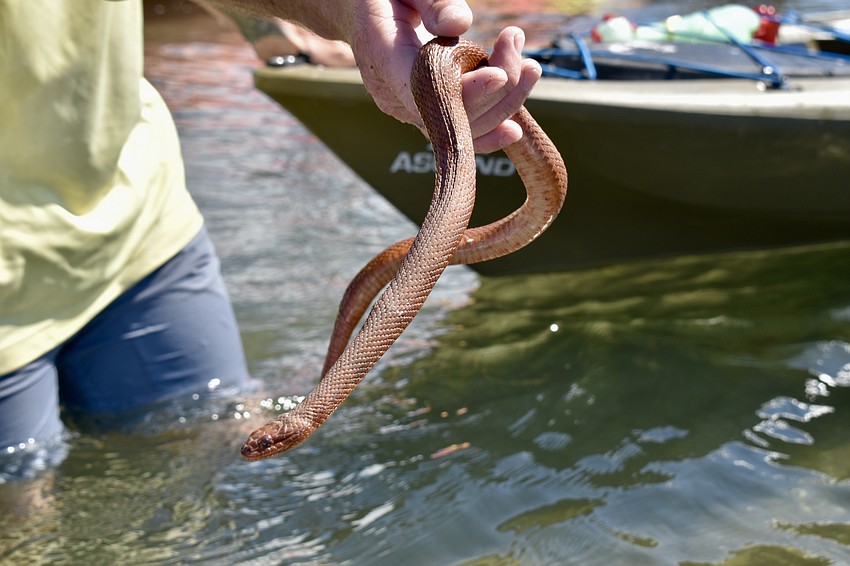
“Paddling with one arm holding a snake is very difficult. My forearm is on fire right now,” he yells while slowly making his way over to the group.
Simmons jokes that the snake is rubber. But it’s very much alive — a rust-colored mangrove marsh snake. Ted Sperling Park Ranger Pete Garcia said it’s unusual to see snakes in the park because it’s filled with so many predators, especially osprey. Plus, the thick maze of mangrove roots provides a plethora of hiding spots.
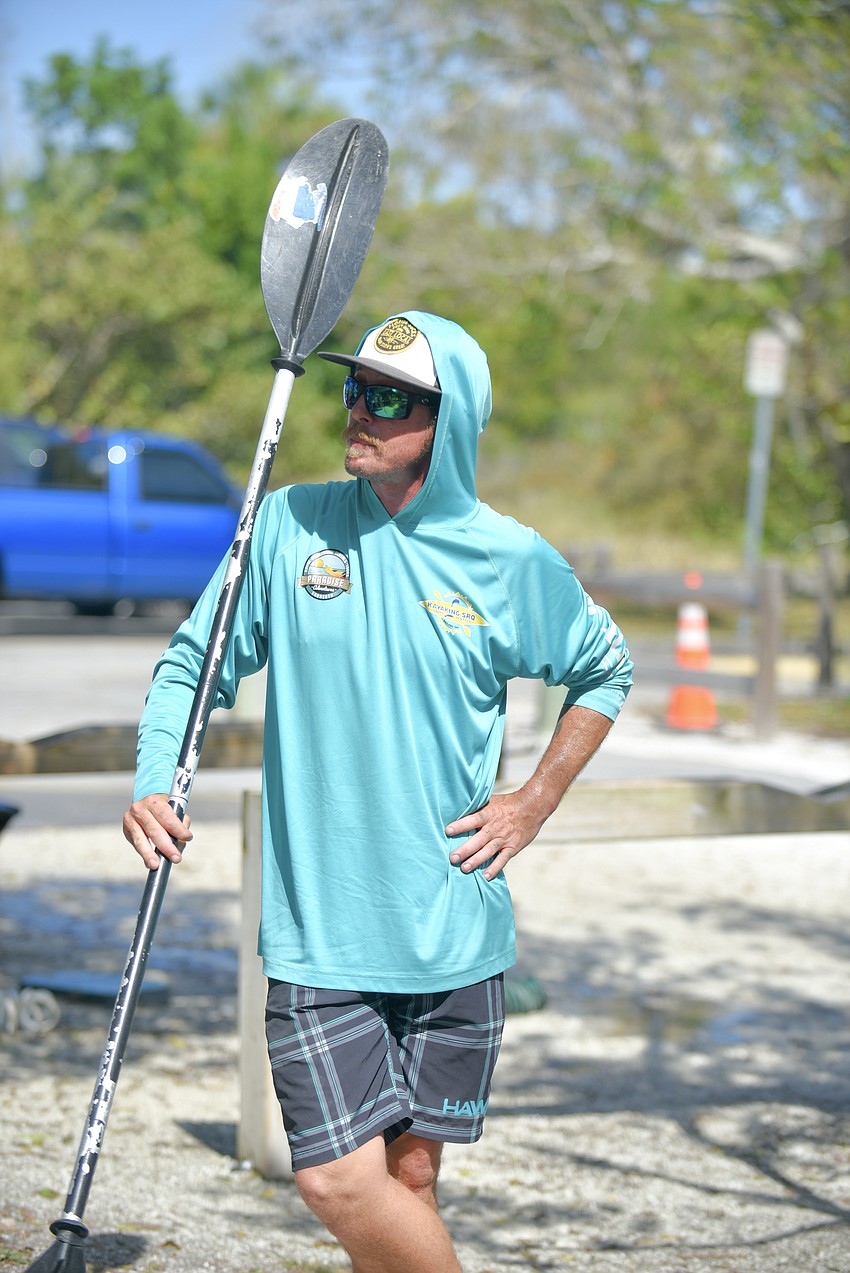
Surprising us with a live snake over his head Tarzan-style pretty much sums up the experience with Simmons, who is a self-described “unicorn” because he was born and raised locally. He doesn’t hesitate to scoop up a snake or jellyfish and is incredibly knowledgeable about the surrounding area. He’s the perfect mix of tour guide, historian and science teacher.
Simmons points to the snake’s tail and explains that males have long, narrow tails and females have short, stubby tails. Then he calls her a beautiful little lady and gently releases her back into the water.
The waiting areas outside of the tunnels are not considered “open water” because they’re still within the protective barrier of the bay and mangroves. We make a brief pit stop on a tiny island and get a panoramic view of the Gulf of Mexico and the history of John Ringling from Simmons, but it’s too windy to venture any further that day.
“When I see whitecaps out in the channel, I don’t do the open water no matter what direction the wind is,” Simmons says. “Even if you get stuck in one gust at 30 miles an hour for 10 seconds, it can completely alter your course.”
After seeing birds, fish, sea hares, jellyfish, sea urchins, starfish and a snake, it didn’t feel like I’d missed out on anything on the tour. But then I heard from our Key Life photographer, Heidi Kurpiela, that a manatee swam up to her kayak in open water while she was shooting this story. So, I asked the park ranger if it’s common to see manatee in the mangroves.
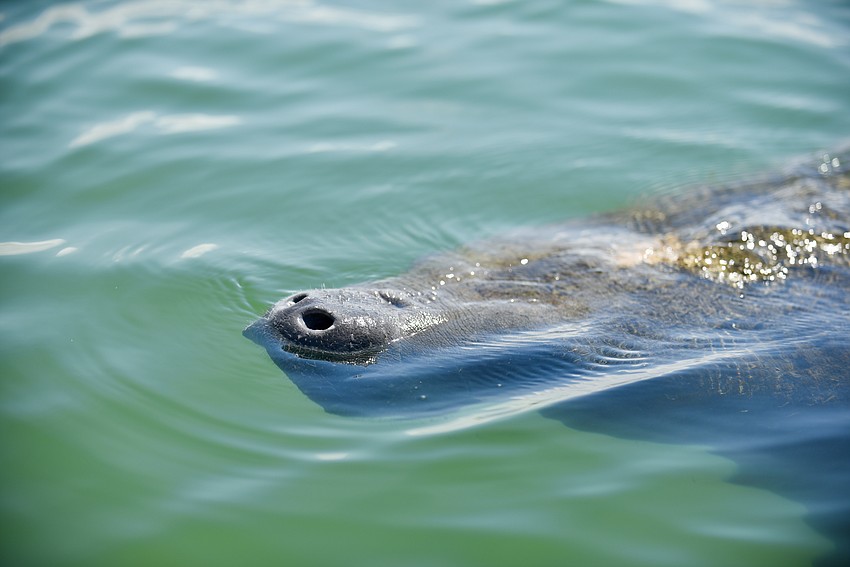
“You could point out every yellow-crowned night heron or ibis, but people are here to see the manatees,” Garcia said. “And they get really excited, for some reason, when they see a racoon coming to the other side. That is the highlight of their trip. Racoons are the most talked about at the end of the day, especially if they’re with little babies.”
I was especially interested in the jellyfish, partly because Simmons picked one up with his bare hands, but also because they used to be so plentiful outside the tunnels. They’re called Cassiopea, or upside-down jellyfish. This was the first kayak trip I’d taken where they weren’t hugging the bottom of the bay like a layer of oversized snowflakes.
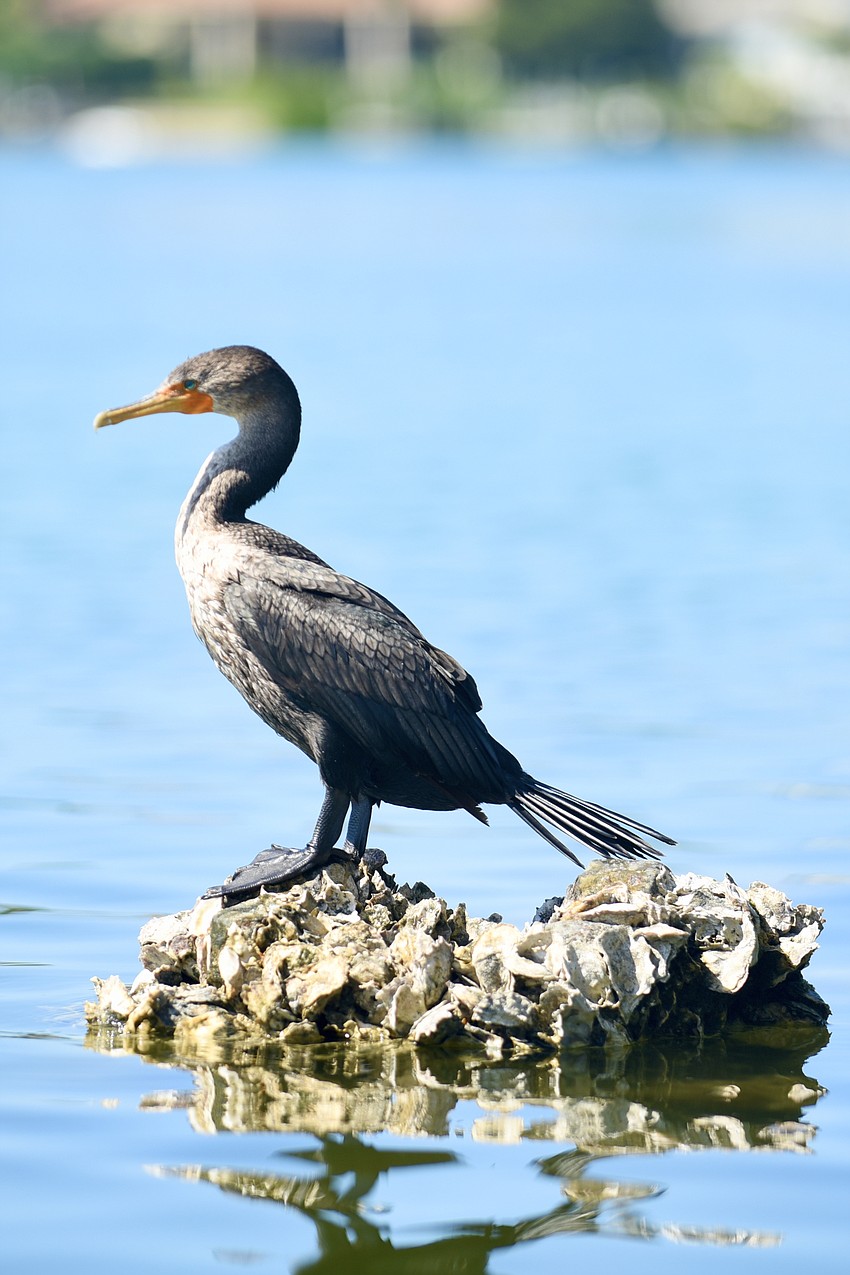
“When Irma came through, we had more jellyfish in this park. Mote Marine Laboratory & Aquarium was down here doing a study. They felt that this area, because of its size, had more jellyfish in one immediate area than anywhere else on the Gulf Coast of Florida,” Garcia said. “After Ian, it seemed to have sucked these jellyfish out into Sarasota Bay again, so we don’t see the jellyfish like we used to after Irma.”
There are four main tunnels used by guides, plus seven ancillary tunnels. The ancillary tunnels are open to tours and the public, but there’s less room to navigate. Prices start at about $60 but vary depending on the kayak, tour and company.
In the 1950s, the Lido Casino was the key’s main attraction. The area known as Brushy Bayou, where the tunnels are now, was a retention area to control stormwater. When it became infested with mosquitoes, the solution was to dig ditches.
“The Army Corp of Engineers used this system for many, many years in many different areas,” Garcia said. “It allowed the transfer of saltwater into that body, turning it into a brackish system and making it impossible for the mosquitoes to breed.”
Seven decades later, the tunnels are a tourist attraction, and the mangroves are protected. Efforts to protect mangroves started in 1984 when Senate Bill 986 directed the Department of Environmental Protection to “adopt general permit rules for protecting mangrove trees or plants from alteration, removal, etc.”
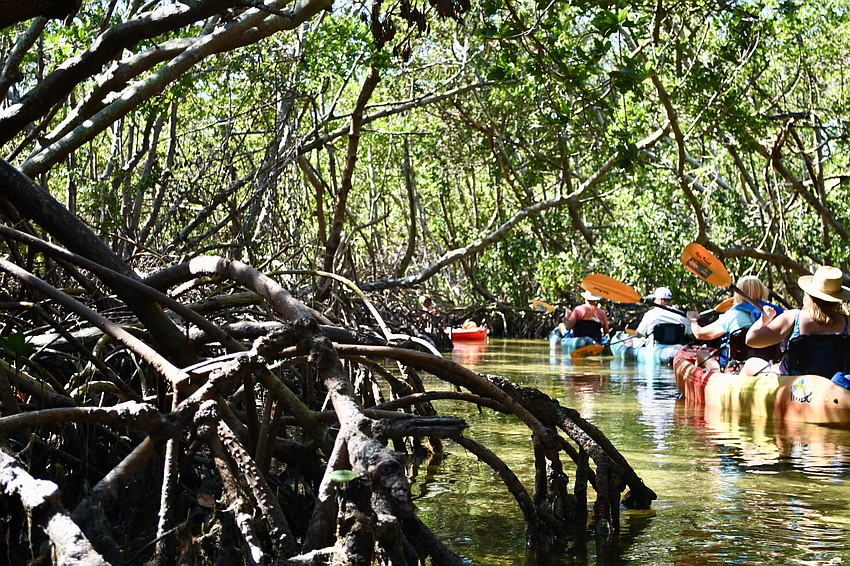
In 1996, the Mangrove Trimming and Preservation Act was passed. The legislation cited that “mangroves play an important ecological role as habitat” and provide “shoreline stabilization and storm protection.”
“The mangroves are protected because they don’t grow as fast as the normal trees,” Sarasota County Arborist Dewey Bullock said. “If we don’t protect them, we’re not going to have any shoreline left.”
Mangroves help prevent erosion and provide a crucial barrier during storms. They also serve as filters. Most plants can’t live in saltwater. The shrub’s ability to desalinate water is so unusual that it inspired Yale researchers to build a device to mimic the process.
The “mangrove device” was unveiled in 2020. As the science advances, its target is flooding. If a building were to act as a mangrove during a flood, not only could it sustain the rising water, but it could also help filter out contaminants.